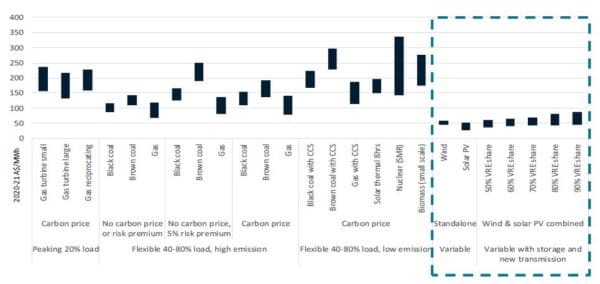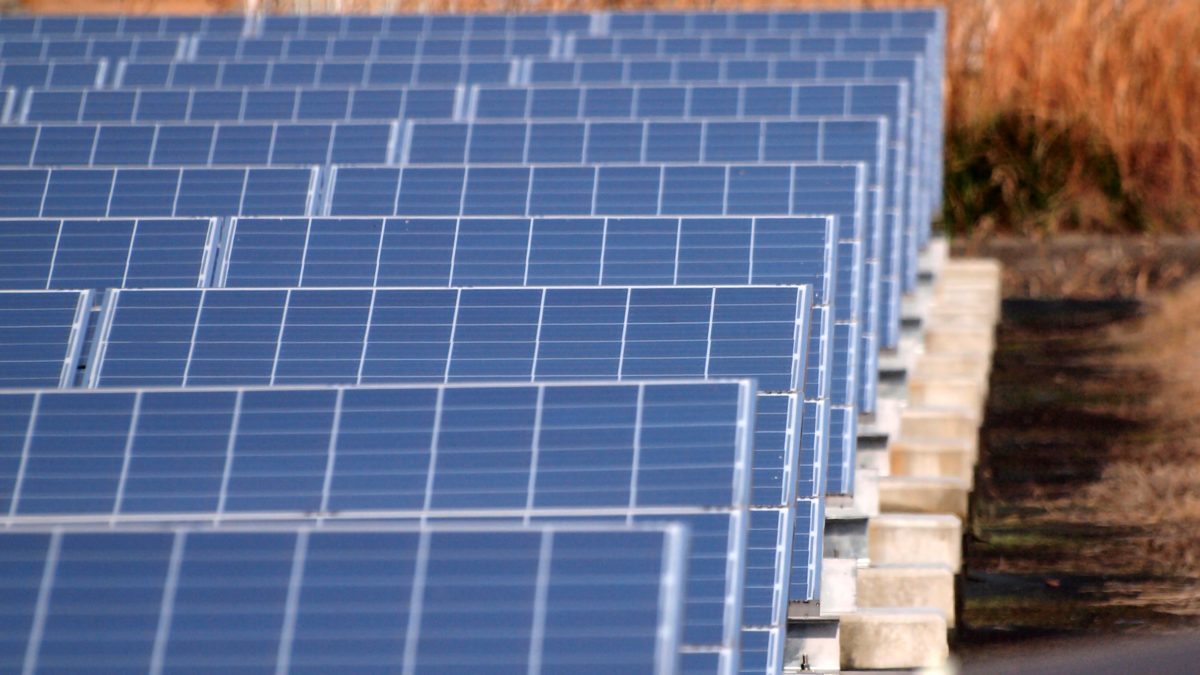The third annual GenCost report, a collaboration between the national science agency and the Australian Energy Market Operator (AEMO), compares and estimates the cost to generate electricity in Australia.
The latest report – which is now open for public consultation – indicates solar PV and wind provide the cheapest sources of new electricity generation capacity and projects they will continue to do so right through to 2050.
The GenCost report, released on Friday, incorporates current capital cost estimates and projections of future changes in costs consistent with a trio of updated global electricity scenarios.
CSIRO chief energy economist Paul Graham said the 2020-21 report improved on past editions by using a more accurate system for calculating the levelised cost of energy by taking new network transmission infrastructure, including planned Renewable Energy Zones (REZs), improved state interconnection and energy storage into account.
“Previous GenCost reports added arbitrary amounts of storage costs, but this year we used a model of the electricity system that optimises the amount of storage needed, and also includes additional transmission expenditure,” he said.
“Even taking into account these extra system integration costs, solar photovoltaics and wind continue to be the cheapest new sources of electricity for any expected share of renewables in the grid — anywhere from 50% to 100%.
“This is projected to continue to be the case throughout the projection period to 2050.”

The report predicts that solar PV and batteries are projected to continue experiencing the fastest cost reductions of any source of energy technology while hydrogen electrolysers are expected to experience substantial cost reductions which will make them competitive with natural gas-based hydrogen production in the long run.
The relative maturity of wind power means its capital costs are falling more slowly than solar PV but the report shows it continues to make efficiency gains, ensuring it remains competitive.
The CSIRO said costs reductions for technologies not currently being widely deployed, such as carbon capture and storage, nuclear small modular reactors, solar thermal and ocean energy, are lagging and would require stronger global investment to realise their full potential.
AEMO group manager forecasting, Nicola Falcon, said the report was critical to future modelling.
“Electricity generation costs are a key ingredient into the electricity sector modelling which underpins much of the sector’s strategic planning and policy analysis, including our Integrated System Plan,” she said.
“Given the importance of this cost data, we are providing an opportunity for industry and other stakeholders to review the data as part of our Draft Inputs, Assumptions and Scenarios Report published today for consultation.”
The final GenCost report and its verdict on solar PV, wind and other types of power generation will be delivered in March 2021.
This content is protected by copyright and may not be reused. If you want to cooperate with us and would like to reuse some of our content, please contact: editors@pv-magazine.com.









By submitting this form you agree to pv magazine using your data for the purposes of publishing your comment.
Your personal data will only be disclosed or otherwise transmitted to third parties for the purposes of spam filtering or if this is necessary for technical maintenance of the website. Any other transfer to third parties will not take place unless this is justified on the basis of applicable data protection regulations or if pv magazine is legally obliged to do so.
You may revoke this consent at any time with effect for the future, in which case your personal data will be deleted immediately. Otherwise, your data will be deleted if pv magazine has processed your request or the purpose of data storage is fulfilled.
Further information on data privacy can be found in our Data Protection Policy.